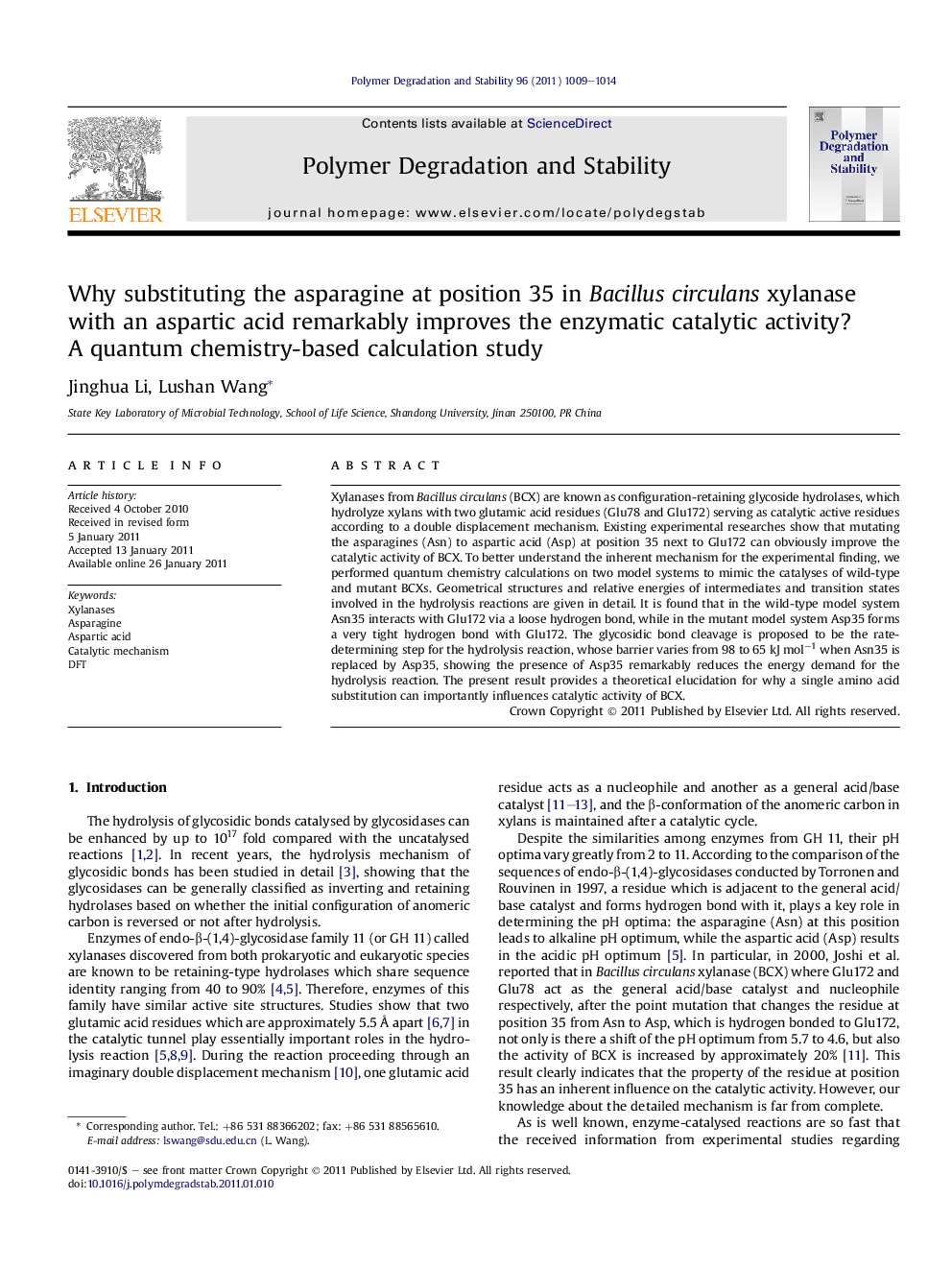| Article ID | Journal | Published Year | Pages | File Type |
|---|---|---|---|---|
| 5202710 | Polymer Degradation and Stability | 2011 | 6 Pages |
Xylanases from Bacillus circulans (BCX) are known as configuration-retaining glycoside hydrolases, which hydrolyze xylans with two glutamic acid residues (Glu78 and Glu172) serving as catalytic active residues according to a double displacement mechanism. Existing experimental researches show that mutating the asparagines (Asn) to aspartic acid (Asp) at position 35 next to Glu172 can obviously improve the catalytic activity of BCX. To better understand the inherent mechanism for the experimental finding, we performed quantum chemistry calculations on two model systems to mimic the catalyses of wild-type and mutant BCXs. Geometrical structures and relative energies of intermediates and transition states involved in the hydrolysis reactions are given in detail. It is found that in the wild-type model system Asn35 interacts with Glu172 via a loose hydrogen bond, while in the mutant model system Asp35 forms a very tight hydrogen bond with Glu172. The glycosidic bond cleavage is proposed to be the rate-determining step for the hydrolysis reaction, whose barrier varies from 98 to 65Â kJÂ molâ1 when Asn35 is replaced by Asp35, showing the presence of Asp35 remarkably reduces the energy demand for the hydrolysis reaction. The present result provides a theoretical elucidation for why a single amino acid substitution can importantly influences catalytic activity of BCX.
